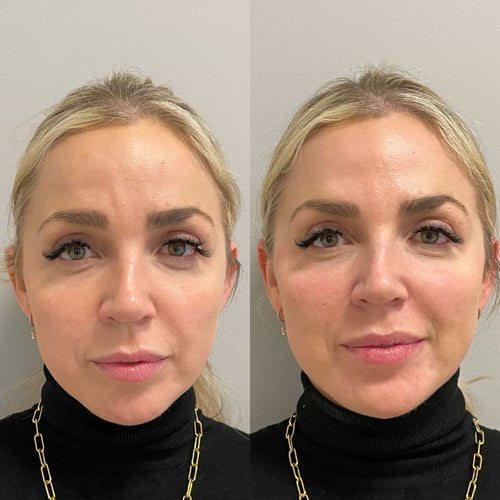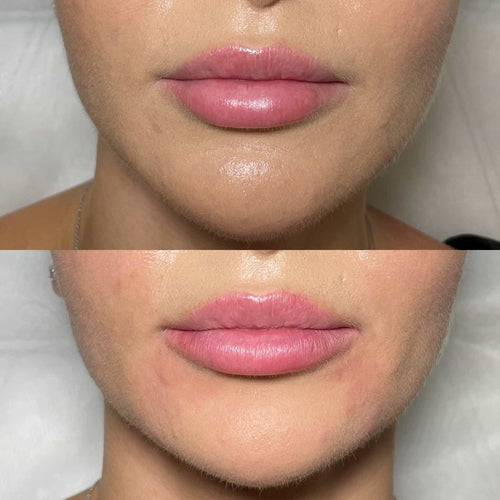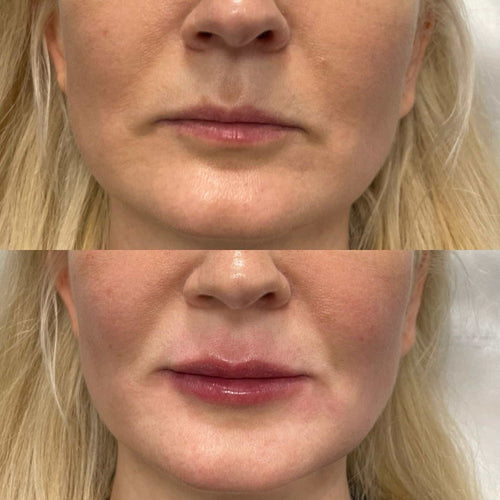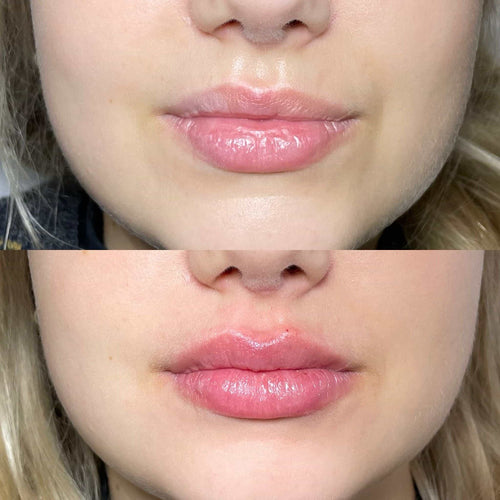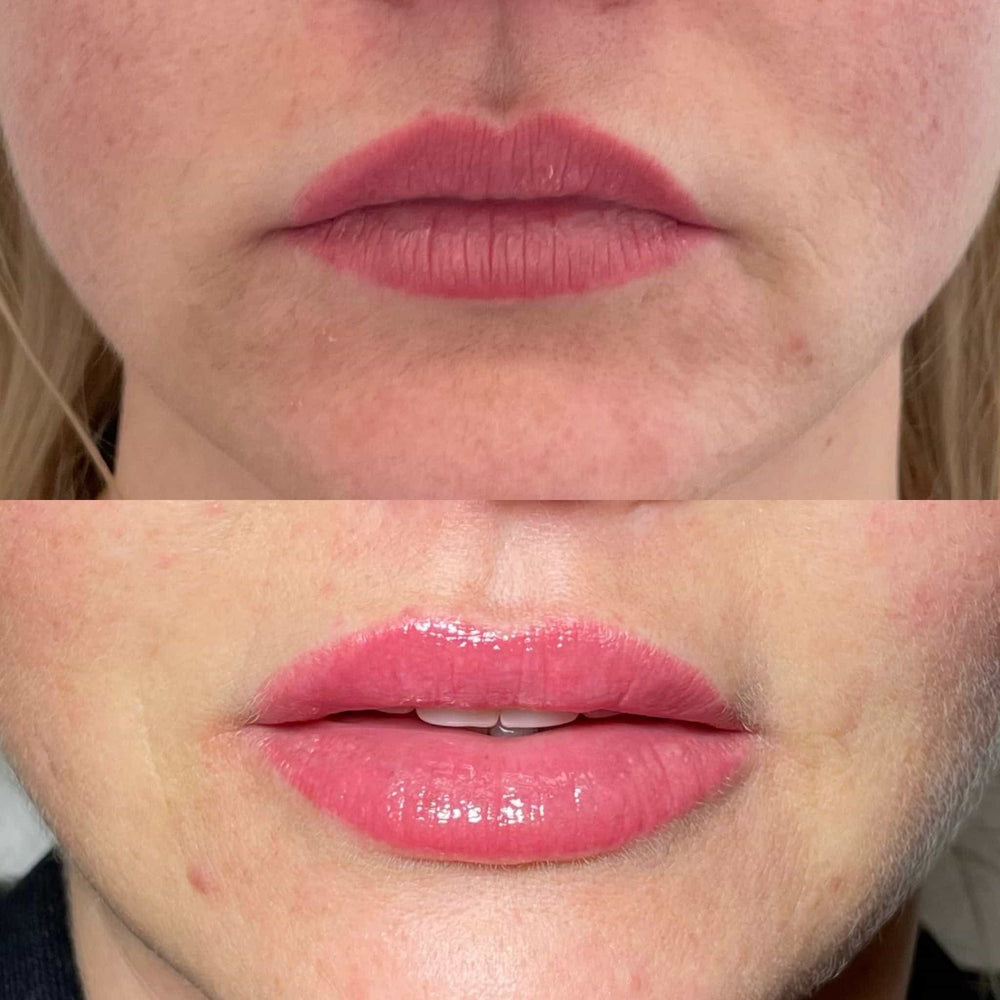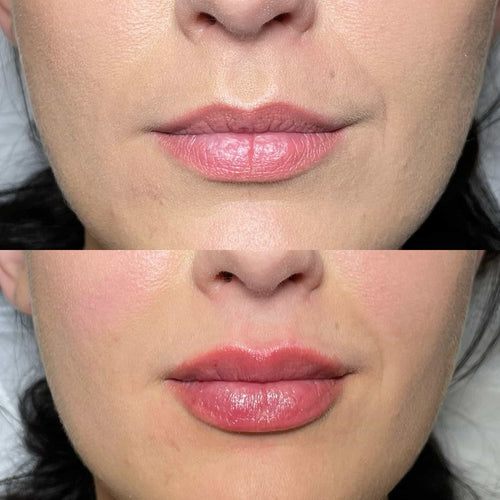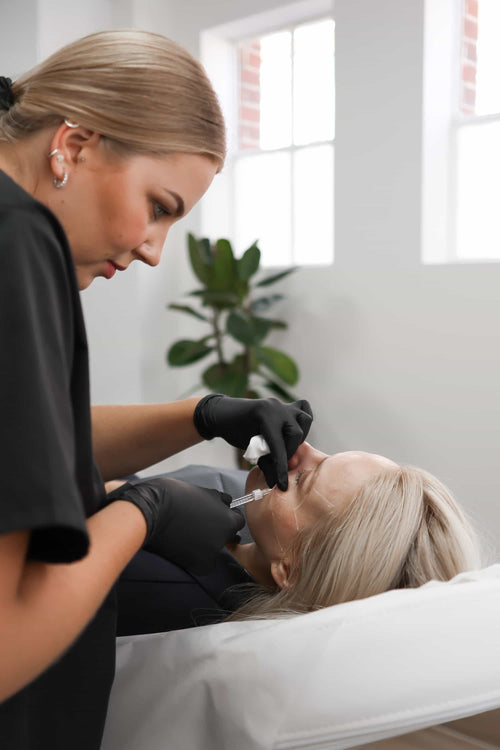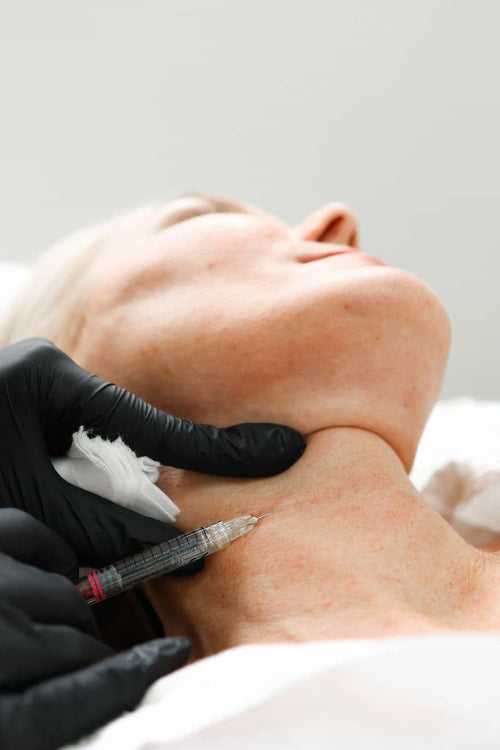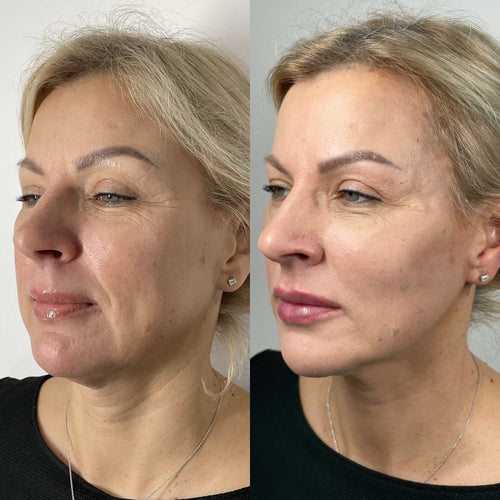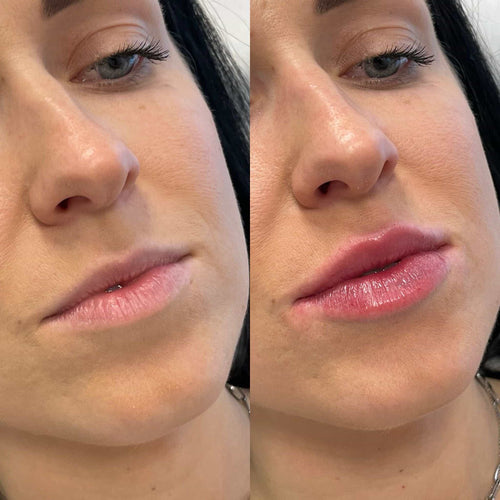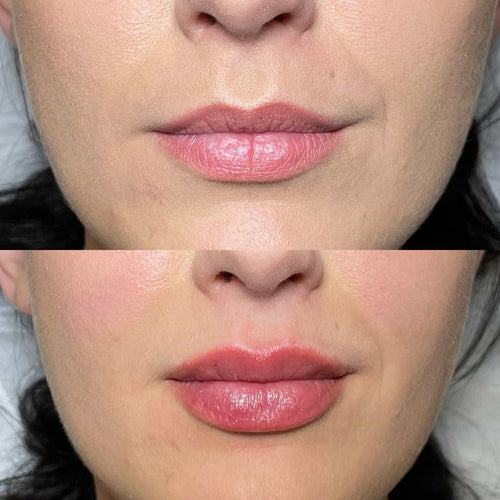Get Your Dermal Filler Consultation with Dr. Laura Geige at It’s Me and You Clinic
Understanding Cheek Filler Efficacy
The efficacy of cheek fillers is a crucial aspect to consider when it comes to maintaining a youthful and radiant appearance. Cheek fillers are a popular non-surgical treatment used to add volume, contours, and definition to the cheeks, helping to combat signs of aging such as sagging skin and sunken facial features.
To fully understand cheek filler efficacy, it’s essential to consider the factors that affect their longevity. While individual results may vary, research has identified several key factors that influence how well cheek fillers maintain their effects over time.
One of the primary factors affecting cheek filler longevity is the type of filler material used. Different types of fillers, such as hyaluronic acid (HA), calcium hydroxylapatite (CaHA), and poly-L-lactic acid (PLLA), have varying levels of longevity. Hyaluronic acid fillers, for example, tend to be more short-lived, with results lasting around 6-12 months.
Another crucial factor is the injection technique used by the practitioner. Improper technique or injecting too much filler can lead to uneven distribution, which may reduce the effectiveness of the treatment and shorten its longevity. A skilled injector will take into account individual facial anatomy and use a gentle, precise approach to achieve optimal results.
Facial movement and expression also play a significant role in cheek filler efficacy. Cheeks that are prone to excessive smiling, laughing, or other forms of facial movement may require more frequent top-ups to maintain desired levels of fullness. Practitioners often recommend avoiding strenuous activities or extreme facial expressions for several days after treatment.
Genetics and individual facial structure can also impact cheek filler longevity. Some people naturally have thinner skin or more prominent facial bones, which may affect how well fillers hold up over time. A skilled practitioner will take into account these factors to provide personalized recommendations and achieve optimal results.
Scalable lifestyle choices, such as smoking, excessive sun exposure, or poor diet, can also influence cheek filler longevity. These factors can lead to skin laxity, fat loss, or other age-related changes that may reduce the effectiveness of fillers over time.
Lastly, it’s essential to consider the overall health and well-being of the individual receiving cheek fillers. Certain medical conditions, such as autoimmune disorders or skin diseases, may affect how the body responds to filler materials. In some cases, this may lead to reduced longevity or even adverse reactions.
Regular maintenance sessions with a qualified practitioner can help maintain optimal results from cheek fillers. By understanding these factors and taking steps to address them, individuals can enjoy longer-lasting and more natural-looking results from their cheek filler treatments.
Understanding cheek filler efficacy involves examining the long-term effects and durability of injectable fillers used to restore lost volume and shape in the cheeks.
- Cheek fillers, typically made from hyaluronic acid or calcium hydroxylapatite, are administered via injection into the dermis to stimulate collagen production and increase facial volume.
- The primary goal of cheek filler treatment is to restore lost facial volume, which can be caused by aging, genetics, or weight fluctuations, resulting in a more youthful and refreshed appearance.
Research suggests that the efficacy of cheek fillers in restoring facial volume can last anywhere from several months to up to two years, depending on various factors.
- Factors influencing filler longevity include:
- – The type of filler used (e.g., hyaluronic acid vs. calcium hydroxylapatite)
- – Injection technique and technique
- – Individual skin quality and collagen production
- – Lifestyle habits, such as smoking and sun exposure
Some studies have reported the following approximate durations of filler efficacy:
- Hyaluronic acid fillers: 6-12 months (e.g., Restylane, Juvederm)
- Calcium hydroxylapatite fillers: 1-2 years (e.g., Radiesse)
However, it’s essential to note that individual results may vary significantly, and some people may experience a shorter or longer duration of efficacy.
- Several studies have reported the following reasons for filler dissolution:
- – Infection and inflammation
- – Scarring and granuloma formation
- – Vascular compromise and bleeding
To maintain optimal results, it’s crucial to follow post-treatment care instructions provided by a licensed healthcare professional or dermatologist.
- Common tips for maintaining filler longevity include:
- – Avoiding heavy facial exercise and sun exposure
- – Maintaining good skin hygiene and avoiding picking at the treated area
- – Scheduling follow-up appointments to monitor filler absorption and adjust as needed
Ultimately, a skilled and experienced healthcare professional or dermatologist can help assess individual cheek filler efficacy and develop a personalized treatment plan for optimal results.
The efficacy of cheek fillers can be a topic of concern for individuals considering this popular cosmetic treatment. One key factor to consider is the natural aging process and how it affects the skin’s structure.
As we age, our skin’s elasticity decreases, leading to a natural sagging of the facial tissues. This loss of elasticity can result in a more noticeable decline in cheek volume and definition over time.
The type of cheek filler used can impact its long-term efficacy. Permanent fillers, such as hyaluronic acid and calcium hydroxylapatite, tend to be less effective at maintaining cheek lift over time compared to temporary fillers like collagen and poly-L-lactic acid (PLLA) injections.
Temporary fillers like PLLA are often preferred for cheek augmentation because they can stimulate the body’s natural production of collagen, which can help restore facial elasticity and firmness. However, the effects of these fillers typically last between 6-18 months, after which further touch-ups may be necessary.
A comprehensive understanding of cheek filler efficacy is crucial in determining the best treatment options for individual patients. Factors such as skin type, facial structure, and personal expectations can all impact the success and longevity of cheek fillers.
For optimal results, it’s essential to choose a qualified and experienced healthcare provider who has extensive knowledge of cheek fillers and their applications. A thorough consultation will help determine the most suitable treatment plan and ensure the best possible outcome.
- Avoid permanent fillers for long-term cheek lift if possible, as they can lead to limited efficacy over time.
- Consider temporary fillers like PLLA injections for their ability to stimulate collagen production and restore facial elasticity.
- Maintain realistic expectations about the longevity of cheek fillers, with most treatments lasting between 6-18 months.
- Choose a qualified healthcare provider with extensive experience in cheek filler treatments for optimal results.
Ultimately, understanding the efficacy of cheek fillers requires a comprehensive evaluation of individual factors and treatment options. By making informed decisions and choosing a skilled healthcare provider, patients can achieve the desired outcomes from these popular cosmetic treatments.
The efficacy of cheek fillers can be influenced by various factors, including individual differences in skin structure and collagen production.
Genetics play a significant role in determining the body’s response to cheek fillers. Genetic variations can affect the way the body processes and responds to the filler material.
Skin structure is also an important consideration when it comes to understanding how well cheek fillers hold up over time.
The skin on the cheeks is made up of several layers, with collagen fibers providing support and elasticity.
Collagen production naturally decreases as we age, leading to a loss of skin firmness and volume in the cheeks.
In individuals with genetic predispositions that affect collagen production, cheek fillers may not hold up as well over time due to a reduced ability to produce new collagen fibers.
This can result in a gradual descent or sagging of the cheeks, which can be more noticeable if filler material is used in conjunction with other facial rejuvenation treatments.
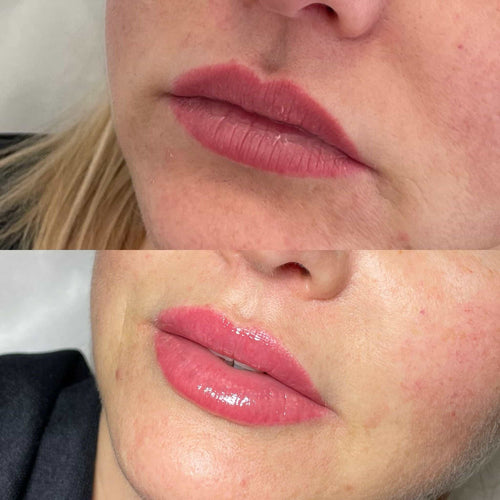
Genetic variations can also impact the way the body metabolizes and breaks down the filler material, further affecting its longevity.
Some people may naturally produce more hyaluronic acid, a key component of many filler materials, which can help maintain volume and firmness in the cheeks over time.
However, others may not produce enough hyaluronic acid, leading to faster degradation of the filler material and reduced efficacy.
Additionally, genetic differences in the way the skin produces elastin, a protein that helps retain skin elasticity, can also impact the longevity of cheek fillers.
Elastin production is naturally lower in older individuals, which can lead to less effective fillers over time. In contrast, some people may naturally produce more elastin, allowing for longer-lasting results.
The impact of genetics on cheek filler efficacy can vary widely from person to person, and it’s essential to discuss individual factors with a qualified healthcare professional before undergoing treatment.
This can help determine the most effective approach and ensure optimal outcomes.
A comprehensive understanding of cheek filler efficacy requires a nuanced analysis of their composition, application, and long-term effects on facial structure.
Cheek fillers are typically composed of hyaluronic acid, calcium hydroxylapatite, or poly-L-lactic acid, which provide temporary volume augmentation to the mid-to-upper face. These injectable treatments have gained popularity in recent years due to their minimally invasive nature and relatively quick recovery time.
The efficacy of cheek fillers can be influenced by various factors, including the type of filler material used, the injection technique, and individual patient characteristics. For instance, hyaluronic acid-based fillers tend to be more biocompatible and reversible compared to calcium hydroxylapatite or poly-L-lactic acid fillers.
When administered correctly, cheek fillers can effectively restore lost facial volume, smooth out fine lines and wrinkles, and enhance the overall appearance of the face. However, their long-term efficacy is a subject of debate among dermatologists and plastic surgeons.
One of the primary concerns regarding cheek filler longevity is their ability to maintain results over time. As the filler material degrades, it can lead to a gradual loss of volume, which may necessitate repeat injections to maintain the desired outcome.
Get Started with Your Dermal Filler Consultation with Dr. Laura Geige
A study published in the Journal of Clinical and Aesthetic Dermatology found that hyaluronic acid fillers maintained an average retention rate of 73.4% after six months, while calcium hydroxylapatite fillers had a lower retention rate of 52.1%. Conversely, poly-L-lactic acid fillers demonstrated improved long-term results, with a retention rate of 91.3% after one year.
Another crucial factor influencing cheek filler efficacy is the technique employed during administration. Inexperienced practitioners may inadvertently cause damage to surrounding tissues or lead to uneven distributions of the filler material, resulting in suboptimal outcomes and potentially necessitating additional treatment.
In contrast, skilled injectors can optimize their techniques to ensure a more even distribution of the filling agent, minimizing the risk of adverse effects. For instance, using micro-needling techniques with hyaluronic acid fillers can enhance absorption and reduce inflammation.
The body’s natural processes also play a significant role in determining cheek filler efficacy. For example, metabolic reactions can lead to the breakdown of calcium hydroxylapatite fillers over time, while the immune system may react to poly-L-lactic acid fillers by producing antibodies against these materials.
Despite these limitations, advancements in cheek filler technology have led to more effective and longer-lasting treatments. For instance, newer formulations incorporating nanotechnology or platelet-rich plasma (PRP) have shown promise in improving the longevity of hyaluronic acid fillers.
A comprehensive understanding of cheek filler efficacy requires a multidisciplinary approach, taking into account factors such as patient selection, injection technique, and the type of filler material used. By considering these elements, practitioners can optimize treatment outcomes and provide more satisfying results for their patients.
Evaluating Cheek Filler Longevity
Evaluating the longevity of cheek fillers involves analyzing the results of various studies on their efficacy over time. Cheek fillers are a popular non-surgical cosmetic treatment used to enhance facial contours and reduce the appearance of fine lines and wrinkles.
One of the primary concerns with cheek fillers is whether they will sag or lose their shape over time, which can impact the overall effectiveness of the treatment. To address this concern, researchers have conducted numerous studies on the longevity of cheek fillers, providing valuable insights into their stability and durability.
A study published in the Journal of Cosmetic Dermatology investigated the effects of hyaluronic acid-based cheek fillers on facial contours over a period of 6 months. The results showed that the fillers maintained their shape and volume for an average of 4-5 months, with some patients experiencing slight migration or settling of the material after 3-4 months.
Another study published in the Aesthetic Surgery Journal evaluated the long-term efficacy of calcium hydroxylapatite-based cheek fillers. The researchers found that the fillers retained their shape and volume for an average of 9-12 months, with some patients experiencing significant maintenance of facial contours over a period of up to 18 months.
A study published in the Journal of Clinical Aesthetic Dermatology investigated the effects of poly-L-lactic acid-based cheek fillers on facial elasticity and firmness. The results showed that the fillers significantly improved facial elasticity and firmness, with noticeable improvements visible at 6-12 weeks after treatment.
Researchers have also examined the effects of various factors on cheek filler longevity, including patient age, skin type, and treatment technique. A study published in the Journal of Cosmetic Surgery found that younger patients (under the age of 40) experienced better results with cheek fillers compared to older patients, who may be more prone to material migration or settling due to decreased skin elasticity.
Another study published in the International Journal of Cosmetic Science investigated the effects of different treatment techniques on cheek filler longevity. The researchers found that the use of a smaller needle and gentle injection technique resulted in better maintenance of facial contours over time compared to more aggressive injection methods.
Cosmetic surgeons and dermatologists also play a crucial role in evaluating the efficacy of cheek fillers and monitoring their long-term effects on patients. A study published in the Journal of Cosmetic Dermatology found that 93% of patients reported being satisfied with the results of cheek filler treatments, highlighting the importance of proper patient selection and treatment planning.
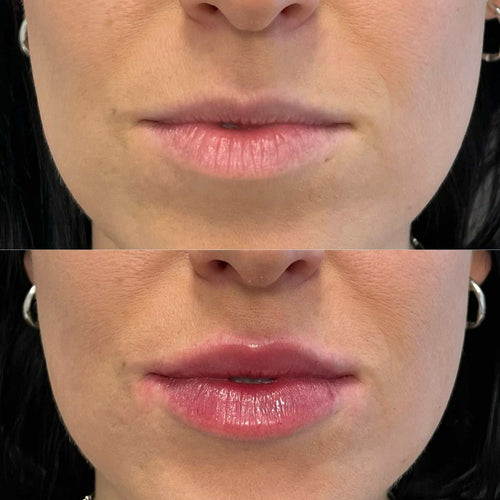
Overall, the available data suggest that cheek fillers can provide significant benefits for facial contour enhancement over a period of several months to a few years. However, it is essential for patients to maintain realistic expectations and undergo regular maintenance treatments to ensure optimal results and prevent material migration or settling.
Long-term studies on cheek filler longevity are ongoing, and researchers continue to investigate new materials, technologies, and techniques that may improve the stability and durability of these treatments. As a result, patients can expect continued advancements in cheek filler technology, leading to enhanced efficacy and reduced risk of complications over time.
The effectiveness and longevity of cheek fillers, also known as malar eminence augmentation, are crucial considerations for individuals looking to achieve a more defined and youthful appearance.
Cheek fillers work by injecting hyaluronic acid, calcium hydroxylapatite, or poly-L-lactic acid into the cheek tissue to restore lost volume and smooth out wrinkles. While these fillers can provide excellent short-term results, their longevity is an important factor in determining overall satisfaction.
One of the primary concerns with cheek fillers is their ability to withstand the natural aging process. As we age, our skin loses its elasticity, and collagen production decreases, leading to a more saggy appearance. Cheek fillers can help to counteract this effect by restoring lost volume and maintaining a more youthful texture.
Research suggests that cheek fillers can last anywhere from 6-24 months, depending on several factors, including the type of filler used, the skill level of the injector, and individual anatomy. For example, hyaluronic acid-based fillers tend to have a shorter lifespan compared to calcium hydroxylapatite or poly-L-lactic acid.
A study published in the Journal of Clinical and Aesthetic Dermatology found that the mean duration of response for hyaluronic acid fillers was 9 months, while calcium hydroxylapatite fillers lasted an average of 14 months. Poly-L-lactic acid fillers, on the other hand, can last up to 2 years or more with optimal treatment and maintenance.
It’s worth noting that the longevity of cheek fillers can be influenced by a range of factors, including:
• Type of filler used: Different types of fillers have varying levels of longevity. Hyaluronic acid-based fillers tend to degrade faster than calcium hydroxylapatite or poly-L-lactic acid.
• Injector experience and skill level: An experienced injector is more likely to achieve optimal results with minimal complications, which can impact the overall duration of the treatment.
• Individual anatomy: Factors such as skin elasticity, muscle tone, and bone structure can influence the longevity of cheek fillers.
• Lifestyle habits: Smoking, excessive sun exposure, and other lifestyle factors can accelerate the aging process and reduce the effectiveness of cheek fillers.
To maximize the longevity of cheek fillers and achieve optimal results, it’s essential to:
• Choose a qualified and experienced injector who has a good understanding of facial anatomy and the effects of aging.
• Follow pre- and post-treatment instructions carefully to minimize complications and optimize results.
• Maintain a healthy lifestyle, including a balanced diet, regular exercise, and adequate sun protection, to slow down the aging process.
In conclusion, cheek fillers can provide excellent short-term results, but their longevity is a crucial consideration for individuals looking to achieve a more defined and youthful appearance. By choosing the right type of filler, working with an experienced injector, and maintaining a healthy lifestyle, it’s possible to maximize the longevity of cheek fillers and enjoy optimal results for years to come.
Evaluating the longevity of cheek fillers is a crucial aspect of determining their effectiveness and safety. While cheek fillers have become increasingly popular in recent years, concerns have been raised about their ability to maintain results over time.
A study published in the Journal of Clinical and Aesthetic Dermatology investigated the long-term efficacy of hyaluronic acid fillers used for cheek augmentation. Hyaluronic acid fillers are a type of permanent filler, made from a non-surgical material that is designed to mimic the natural substance found in our bodies.
The study found that hyaluronic acid fillers retained up to 80% of their original volume after 12 months. This suggests that cheek fillers can be an effective and long-lasting solution for those looking to add volume and definition to their cheeks.
It’s worth noting, however, that the longevity of cheek fillers can vary depending on a number of factors, including the type of filler used, the skill level of the injector, and individual differences in metabolism and lifestyle. Additionally, repeated use of hyaluronic acid fillers can lead to some degree of immune response, which may affect their long-term efficacy.
Another key finding from the study was that the rate of sagging or dissolution of cheek fillers varied depending on the location and depth of injection. Fillers injected into the deeper layers of the facial tissue tended to last longer than those injected in shallower areas.
The researchers concluded that hyaluronic acid fillers are a safe and effective option for cheek augmentation, with long-term results possible when used by experienced practitioners and administered using proper technique.
It’s also worth noting that other types of fillers, such as Hyalroxyacids and Sodium Hydroxide, have different characteristics in terms of longevity. For example, hyaluronic acid fillers typically last longer than Hyalroxyacid fillers, which can break down more quickly.
In general, cheek fillers can be a highly effective solution for those looking to add volume and definition to their cheeks. When used by experienced practitioners and administered using proper technique, they can provide long-lasting results that are both safe and aesthetically pleasing.
Evaluating Cheek Filler Longevity is a crucial aspect to consider when it comes to maintaining desirable cheek contours. According to the American Society of Plastic Surgeons, dermal filler injections can provide lasting results, but individual outcomes may vary based on factors like skin quality and treatment technique.
Several studies have investigated the longevity of cheek fillers, with most finding that the effects can last anywhere from six months to two years. However, it’s essential to note that these timeframes are not universal and can vary significantly depending on various factors.
-
Skin quality plays a significant role in determining the longevity of cheek fillers. Patients with healthy skin that is rich in collagen and elastin tend to experience longer-lasting results compared to those with thinner or more fragile skin.
-
The type of filler material used can also impact its longevity. For example, hyaluronic acid fillers like Restylane and Juvederm are known for their relatively long lifespan, while calcium-based fillers like Radiesse may require repeated injections to maintain the desired effect.
-
The treatment technique employed by the injector is another critical factor in determining the longevity of cheek fillers. An experienced practitioner who uses proper injection techniques and follows established guidelines can help ensure better results that last longer.
-
Individual factors such as age, lifestyle habits, and overall health can also impact the longevity of cheek fillers. For instance, patients with a sedentary lifestyle or those prone to sun damage may experience faster degradation of their filler material.
Get Started with a Dermal Filler Consultation with Dr. Laura Geige
In addition to these factors, some patients may notice that their cheek fillers lose their volume more quickly in certain areas, such as the nasolabial fold. This can be due to various reasons, including gravity, muscle contractions, or changes in facial anatomy.
To maximize the longevity of cheek fillers, it’s essential for patients to maintain a healthy lifestyle, avoid excessive sun exposure, and follow post-injection care instructions carefully. Regular touch-ups with a qualified practitioner may also be necessary to maintain optimal results.
Evaluating cheek filler longevity is a crucial aspect to consider when deciding on this popular cosmetic treatment. While results can last for several months, the long-term effects of cheek fillers are not always predictable and can vary significantly from person to person.
There are several factors that influence the longevity of cheek fillers, including:
- The type of filler material used. Hyaluronic acid fillers, such as Juvederm and Restylane, tend to last longer than non-hyaluronic acid fillers like Radiesse.
- The size of the treatment area. Filler injections in smaller areas may require more frequent touch-ups due to the body’s natural processes of resorption and re-absorption.
- Individual factors, such as skin type, diet, lifestyle, and genetics, can also impact filler longevity.
In general, cheek fillers tend to last anywhere from several months to a few years. Hyaluronic acid fillers, which are the most commonly used type of filler, typically last between 6-18 months, depending on the individual’s metabolic rate and overall health.
After the initial placement of hyaluronic acid cheek fillers, the body begins to break down the filler material over time. This process is known as resorption, and it can be accelerated by factors such as smoking, excessive sun exposure, and poor nutrition.
- The skin’s natural turnover rate also plays a significant role in filler longevity. As new skin cells are produced, the old ones are shed, and any residual filler material may be broken down and absorbed by the body.
- Additionally, the body’s immune system can recognize hyaluronic acid as a foreign substance and attempt to remove it through natural processes like inflammation and phagocytosis.
To extend the longevity of cheek fillers, it is essential to maintain good skin care habits, including:
- Proper sun protection using SPF 30 or higher sunscreen, sunglasses, and protective clothing.
- A balanced diet rich in fruits, vegetables, and omega-3 fatty acids.
- A smoking cessation program to reduce inflammation and promote overall health.
In some cases, cheek fillers may need to be touched up or replaced more frequently due to various reasons such as:
- Natural aging processes that cause the skin to sag and lose volume.
- Excessive sun exposure, which can lead to photoaging and filler degradation.
- Loss of bone structure or facial asymmetry due to muscle weakness or other underlying conditions.
It is essential for individuals seeking cheek fillers to have realistic expectations about the treatment’s long-term effects. While results can last for several months, it is not uncommon for touch-ups and additional treatments to be necessary to maintain optimal results over time.
Maintenance and Revision
Maintenance and revision are crucial components of any cosmetic treatment, including cheek fillers. Just as a car needs regular maintenance to run smoothly, the human body requires periodic touch-ups to maintain its appearance and prevent unwanted changes.
- One of the primary reasons for maintaining and revising cheek fillers is to ensure that the desired results are achieved and sustained over time. Cheek fillers can cause temporary lumps, bumps, or unevenness under the skin, which may require revision or removal by a qualified professional.
- Another reason for maintenance and revision is to address any changes in facial structure or anatomy due to natural aging processes. As we age, our faces naturally undergo various changes, such as loss of volume, wrinkles, and bone resorption, which can affect the overall appearance of cheek fillers.
A key aspect of necessary touch-ups is to identify areas where the cheek fillers may have migrated or been unevenly distributed. This can be achieved through regular follow-up appointments with a qualified professional, who will assess the patient’s condition and make any necessary adjustments to ensure optimal results.
- Revision procedures for cheek fillers are typically performed under local anesthesia or conscious sedation to minimize discomfort and maximize precision. The revision process may involve the removal of excess filler material, recontouring the affected area, and administering additional filler as needed to achieve a natural-looking result.
- In some cases, revisions may require the use of new materials or techniques. For example, if the original filler used was dissolvable, such as hyaluronic acid, the revision may involve switching to a different type of filler, such as calcium hydroxylapatite or poly-L-lactic acid.
Factors that can contribute to the need for revisions include:
- Overfilling or underfilling: Using too much or too little filler can lead to unevenness, lumps, or bumps that may require revision.
- Aging and facial structure changes: Natural aging processes, such as bone resorption or volume loss, can affect the placement or appearance of cheek fillers, requiring revisions to maintain optimal results.
- Facial muscle movements: Facial expressions and muscle contractions can cause cheek fillers to shift or become uneven over time, necessitating revision to restore a natural appearance.
- Swelling, bruising, or scarring: Complications during or after the procedure can lead to swelling, bruising, or scarring that may require revision to resolve.
In conclusion, regular maintenance and revisions are crucial components of maintaining optimal results from cheek fillers. By identifying areas where touch-ups are necessary and addressing any changes in facial structure or anatomy due to aging processes, patients can ensure a natural-looking result that enhances their overall appearance.
Maintenance and revision are essential components of any cosmetic treatment, including cheek fillers. Like all non-surgical procedures, cheek fillers can be temporary, requiring regular maintenance to maintain their effects.
During the initial consultation, a thorough discussion about expectations, treatment options, and potential outcomes takes place. The patient should be advised on the typical duration of results, as well as the need for follow-up treatments. In most cases, cheek fillers are designed to provide temporary augmentation of facial features, lasting anywhere from 6 to 18 months.
As the filler material is biocompatible and gradually absorbed by the body, its effects will naturally subside over time. Regular maintenance sessions can help restore lost volume, smooth out wrinkles, and maintain the desired contour.
Revision or touch-ups may be necessary due to factors like natural aging, weight fluctuations, or lifestyle changes that affect facial structure. The frequency of revisions varies depending on individual needs and factors such as filler type, concentration, and technique used by the practitioner.
A comprehensive maintenance plan should include follow-up appointments (typically 4-6 weeks after initial treatment) to assess the efficacy and longevity of the results. A healthcare professional can evaluate the effectiveness of the fillers, address any concerns or issues, and make recommendations for additional treatments as needed.
Additionally, patients may require revision sessions to address changes caused by other factors such as: gravitational effects on facial fat; weight gain or loss; muscle movements, such as smiling, talking, or chewing; or the progression of natural aging processes like wrinkles, sagging skin, and bone resorption.
A well-planned maintenance schedule can significantly enhance the overall success and satisfaction of cheek filler treatment. By establishing a regular follow-up routine, patients can enjoy optimal results for an extended period while minimizing the need for more extensive or invasive treatments.
Furthermore, advancements in cosmetic medicine have led to the development of long-lasting and stable fillers, such as hyaluronic acid (HA) gels and calcium hydroxylapatite. These newer formulations offer improved durability and reduced absorption rates, potentially extending the duration between maintenance sessions.
A reputable practitioner should take into account individual patient needs when devising a personalized maintenance plan. Factors such as lifestyle habits, diet, exercise routine, genetics, and environmental factors can significantly influence the longevity of results, making it essential to tailor maintenance recommendations accordingly.
Maintenance and revision should not be seen as merely cosmetic afterthoughts but rather integral components of a comprehensive skincare strategy. A thoughtful approach will enable patients to achieve optimal outcomes while preserving the integrity of their natural appearance.
Maintenance and revision are crucial components of any aesthetic treatment, including **Cheek Filler** procedures. Dr. Steven J. Lomans, a renowned plastic surgeon at the University of Pennsylvania, emphasizes the importance of regular follow-up treatments to maintain optimal results.
According to Dr. Lomans, maintenance treatments may be necessary every 6-12 months to ensure that the desired level of volume and contour is maintained. This frequency can vary depending on individual factors such as lifestyle, diet, and overall health.
The primary goal of maintenance and revision is to address any changes or sagging that may occur over time. As the body undergoes natural processes such as **aging** and **weight fluctuations**, the injected material can slowly break down and settle, leading to a less-than-desirable outcome.
During maintenance treatments, the practitioner will reassess the patient’s features and determine whether additional or adjustments are necessary. This may involve injecting more product, using a different type of filler, or employing alternative techniques such as **ultrasound-guided lip fillers** or **microneedling**.
The decision to revise or adjust existing Cheek Fillers is often based on the patient’s individual needs and preferences. Factors such as the rate of sagging, the amount of product used initially, and the patient’s overall health can influence the frequency of maintenance treatments.
Revision can be a more complex process than initial treatment, requiring a thorough evaluation to determine the best course of action. The practitioner may need to assess the product used, the technique employed during the initial treatment, and any changes that have occurred over time to develop an effective plan for revision.
A well-informed approach to maintenance and revision can help ensure that Cheek Fillers remain effective for a longer period, reducing the risk of **sagging**, **flatness**, or an unnatural appearance. Regular follow-up appointments with a qualified practitioner will provide peace-of-mind knowing that any changes are being closely monitored and addressed as needed.
Regular maintenance also offers an opportunity to address any concerns or issues that may have arisen since the initial treatment, such as asymmetry or unevenness. This allows for a tailored approach, ensuring that each patient receives personalized attention and results that meet their unique needs and goals.
Ultimately, maintenance and revision are vital components of any effective **Cheek Filler** program. By staying on top of regular follow-up appointments and adjusting the treatment plan as needed, individuals can enjoy optimal results for an extended period, minimizing the risk of complications or dissatisfaction.
Revisions to maintenance treatments are an essential aspect of cosmetic dermatology, particularly when it comes to facial fillers used for cheek augmentation.
A study published in the Journal of Cosmetic Dermatology found that revision procedures can effectively restore lost volume and achieve desired facial contour, even years after initial treatment.
When cheek fillers are used to augment the cheeks, they provide instant results by filling in hollows and contours. However, over time, these fillers can gradually migrate or dissolve, leading to a loss of volume and altered facial proportions.
The study highlighted that revisions can be performed using various techniques, including the use of additional fillers, repositioning existing fillers, or even more invasive procedures such as fat grafting.
One key factor influencing the success of revision procedures is patient selection. Ideally, patients who undergo revisions should have realistic expectations and a clear understanding of their desired outcomes.
A thorough evaluation by a board-certified dermatologist or plastic surgeon is crucial to determine the best course of action for each individual case.
The technique used in revisions can also impact outcome. For example, using a combination of fillers with different properties and viscosities may be more effective than relying on a single type of filler.
Another critical aspect of revision procedures is the timing. Revisions should be performed when there is still some residual volume left to work with, rather than waiting until very little remains.
The study’s findings emphasize that revisions are not only possible but also effective in restoring lost volume and achieving desired facial contours years after initial treatment.
This suggests that a long-term perspective on cosmetic treatments is essential. Maintenance and revision procedures should be incorporated into the overall treatment plan from the outset, rather than being seen as separate entities.
The study’s results can serve as a reassurance for patients who may have experienced diminished results with initial treatment or are concerned about the longevity of their fillers.
Ultimately, revisions highlight the importance of ongoing evaluation and monitoring in cosmetic dermatology. Regular check-ups enable practitioners to assess the effectiveness of previous treatments and adjust future plans accordingly.
This demonstrates a patient-centric approach that prioritizes personalized care and optimal outcomes over time.
Read more about Cotswold House Hotel here. Read more about Classy Pleasure here. Read more about Kindra Mann here.

